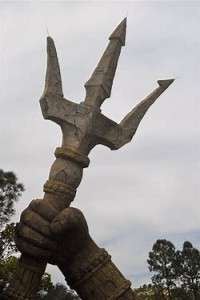
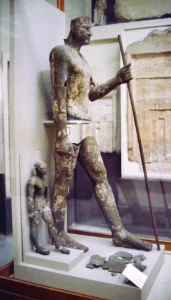
Even more impressive was the copper statue (measuring 178 cm in height) of Pepy I of the Sixth Dynasty that Quibell unearthed shortly after the discovery of the Horus statue, in a pit below the floor of another of the temple’s rooms. After the removal of the king’s statue, Quibell was astonished to find that a second, smaller statue was hidden inside its torso. This statue is now generally thought to represent Pepy as a youth, although it was originally taken to be a representation of his son and successor Merenra. {'Ancient Egypt' / September-October 2025}. 'ISHON' to enlarge. AND/OR: "The first and most fundamental effort is the objective study of ourselves. Why? Because nothing real can take place until we know what we are dealing with. We cannot take for granted that we know how or why we function the way we do. So try observing yourself from a completely neutral standpoint. Do not judge what you see. Just see it. Observe your reactions, your attitudes, your moods and the many aspects of yourself that takes charge from moment to moment. If you do this with courage and sincerity, not justifying ever action and passing thought, you begin to see yourself more objectively and initiate the awareness of the Observing Self who will be the key to your recovery. This simple effort begins the process of creating a space within you that is not completely hypnotized by external events." {'The Wisdom of the Fourth Way' / T. Nottingham}. 'Void' / 'Gap' to enlarge.
Analogy of same..."Sulphur was considered the father of metals and mercury the mother, and all metals were procreated from them. A 'sexual' act was necessary to create the 'stone,' its composition analogous to the birth of a human. George Ripley said, ''mercury is an unruly woman who had to be governed and is not let out until she has conceived a 'child.' '' The coagula symbolized the regeneration or reconstruction of the body. A series of dissolution's and coagulation's in the vessel, that is, death and regeneration was called the ''solve et coagula.'' The black state in the Great Work represented prison. The mercury and gold were confined in 'prison' and setting them free was necessary. The mercurial serpent symbolized the spirit hidden in matter, which existed at the beginning and end of the great work. Destructive at the beginning, it transmuted itself at the end {'Cleo' link?}. Symbolic of life and death, destroyer and healer, slayer and slain, poison {'Scorpion'?} and medicine {Sagittarius?}, it participated in every aspect of the great work. Mercury was both the dark matter and the spirit hidden within. Both dissolver and coagulator, it was released when the old form {'old man'?} was dissolved and 'recaptured' when the spirit was congealed {'morning/evening' stars?}. The union of the coagula symbolized marriage. It represented the triumph over 'separation' and the joining of opposites at all levels, male and female, sun and moon, wet and dry, fixed and volatile, {'fly'?} hot and cold, light and dark, heaven and earth." [Chapter 7, 'Keeper of Secrets' Vol 3 by R. Siblerud]. Think on it relative to the 'Birth of Venus'. A representation of something; other than the obvious. [Found within].
''In the Christian tradition it is the twentyfifth of March that is the date that Mary was told she would give birth to Jesus.''
"They are what i am. But i will be more. Pun: The whole is the sum of its hearts." [Seth quote in relation to the answer given to the question ''What do you think of your various reincarnations?'' Page 16, 'The Seth Material' ].
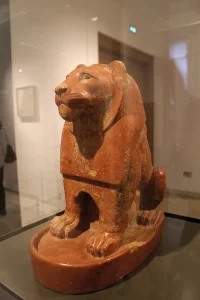
Also found with the Pepy statues were a charming lion figurine made from polished red pottery, and a fine, greenstone-schist statue (about 62 cm in height) of Khasekhemwy, the last pharaoh of the Second Dynasty. Unfortunately, Khasekhemwy was found with half his head missing, but the statue was otherwise in very good condition, and today can be seen in Cairo.
''Sulphur'' in relation to the 'yellow quartz' coffin ? {Hatshepsut}. Where would that ''marriage'' be represented?
And/or: One yellow quartz sarcophagus containing three coffins of Tutankhamun. Surrounded by four golden shrines. A 'circlet' of withered flowers found on the outer coffin - around the snake and vulture neters - in the middle of his forehead. Two orange discs can be seen on the inner golden coffin in the claws of the vulture goddess. [Tutankhamun in Colour / BBC2].
Question. Lotus flowers?
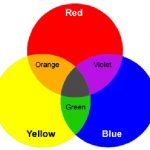 Side note: The colour orange indicative of potassium within volcanic ash. But to much fluoride can seize up the joints etc. {Pompey}.
Side note: The colour orange indicative of potassium within volcanic ash. But to much fluoride can seize up the joints etc. {Pompey}.
A coming together {'morphing'} of Mineral/Vegetable/Animal - represented with Quartz/Lotus/Horus. A 'union' of North and South {Snake/Vulture}.
Scorpion King?
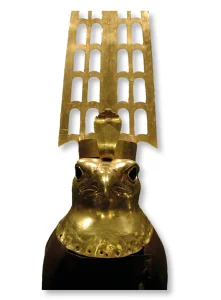
Prior to the discovery of the Main Deposit, Quibell had unearthed other spectacular finds in the temple area at Hierakonpolis. The first was a superbly made sheet-gold and copper statue of Horus – probably dating from the Sixth Dynasty (c.2345-2323 BC) of the Old Kingdom, furnished with lifelike obsidian eyes and a tall, double-plumed headdress. Quibell discovered it in a pit dug below the floor of one of the temple’s five chambers. Unfortunately, the thin copper plates forming the body of Horus cracked, but they were retained and have now been skilfully restored, together with the long copper carrying-pole. The head of Horus is now on display in its original form in the Egyptian Museum in Cairo, giving us a rare view of an actual cult statue. {same}.
''In order for the pharaoh, who held divine office, to be linked to the people and the gods, special epithets were created for them at their accession to the throne. The ancient Egyptian titulary also served to demonstrate one's qualities and link them to the terrestrial realm. The five names were developed over the centuries beginning with the Horus Name. Tutankhamun's original nomen was Tutankhaten, which did not have a Nebty name or a Gold Falcon name associated with it as nothing has been found with the full five name protocol.'' [Wiki].
Something now has.
What does it all mean within a MINDSET? Enlarged throughout.
Side note: The most famous objects discovered in the Main Deposit {Hierakonpolis} are, of course, the Narmer Palette and the mace-heads of King Narmer and King ‘Scorpion’. They are the most significant artefacts yet known from the so-called ‘Unification Period’, when the Two Lands of Upper and Lower Egypt were united, marking the beginning of the Dynastic Period.
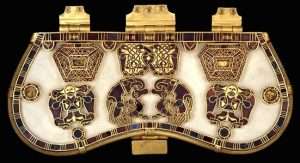
Sutton Hoo purse clasp: Wolfs / eagles and ducks.
However, many other notable items were recovered from the Main Deposit, among which was another important piece from the Unification Period – the ‘Two Dogs Palette’. Like the Narmer Palette, the Two Dogs Palette is an oversized, ceremonial version of the stone palettes commonly used by people of the Naqada Culture for grinding cosmetics, and is beautifully carved with low-relief decoration. It takes its name from the two African wild dogs (commonly known as Cape hunting dogs; Latin name Lycaon pictus – meaning ‘painted wolf’), which frame the scenes on its two faces, although one of the dogs is now missing its head.
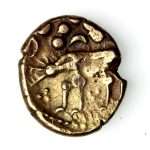
What does 'gold' REPRESENT?
These scenes depict a mixture of wild and fantastical animals, the most striking being the two ‘Serpopards’, feline creatures with impressively long necks {'stretched'?} that stand either side of the central, circular reservoir (for grinding cosmetic pigments) on the obverse face of the palette. Serpopards also appear on the Narmer Palette. Among the other creatures depicted on the Two Dogs Palette are a pair of lions; a griffin with comb-like wings; Saluki hunting dogs; gazelle; a leopard and a giraffe; and a curious jackal-headed figure playing a long flute, perhaps representing a shaman wearing an animal mask. Although we can never know for sure the true meaning of the striking iconography on the Two Dogs Palette, its skilfully carved decoration suggests a theme of royal and divine power bringing order and control to chaos.
Dionysus.
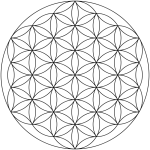
The 'flower' of life. 'nineteen' segments. Found inscribed at the BACK of a rock/stone in the Osireion at Abydos. Question. What age was ''reported'' for Tut's 'death'. And to what 'Mystery' group did they belong to?
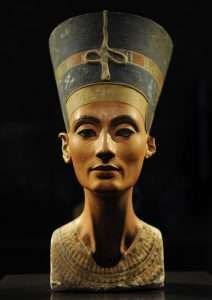
'Stamp of the feminine'? Real or symbolic? Anima or animus or both?
REFRESHER: ''He who through the error of attachment loves his body [or related 'things' only], abides wandering in darkness, aware of his physical senses, suffers the things of death, but he who realizes that the body is but the tomb of his soul {anima therefore 'female' aspect} - rises to immortality."
Try 'Smith and Jones'' before those 1st impressions 'hiss' at something else.
From a different perspective: ''They took the body of Jesus and bound it with burial cloths along with spices, according to Jewish burial custom {John 19:40}....Did they also gather FLOWERS and place them quickly around his head before they bound his body in the burial cloth?...This question arises because of the discovery of the Turin Shroud....A leading Israel botanist, identified several species of flowers around the head...almost 300 flowers with stems....Thorns also identified...'' [Page 71 'Mary Magdalene: Insights from Ancient Magdala' / J. Rishtine].
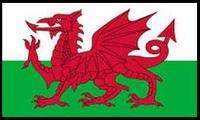
''The tongue of the Welsh dragon is the symbol of the Welsh Language Society.'' Lord of Punt?
Side note: ''Spice'' = Land of Punt link?
And/or: Stem = 'stretched'?
The Welsh 'leek'?
"The siren heralds a friend - the bee a stranger."
''Truth is stranger than fiction.''
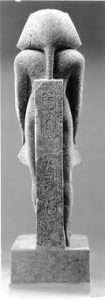
Watching someones back? Any flies?
A working example: ''I hestitated. In the stark light of day, i was starting to feel uncomfortable with the idea of going to a meeting of strangers and Witches and that.'' [Page 19 'Book of Shadows' / P. Curott].
Side note: ''You know the words, so say it with me. “Double, double, toil and trouble, fire burn and cauldron bubble.” This is the first line of what is arguably the most famous scene in Shakespeare’s Macbeth, wherein the three weird sisters add a host of ghastly ingredients to their cauldron for conjuring. But it turns out many of those gross ingredients might not be so icky....
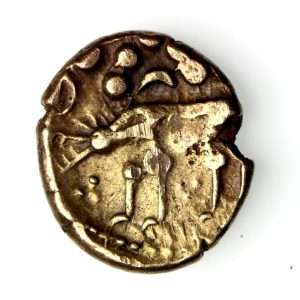
Tooth of the wolf?
“Eyes of newt” and “baboon’s blood” are just a few of the substances the three witches use in their brew, and every single one of the ingredients sound pretty creepy. But in reality, things like “eye of newt” or “wool of dog” weren’t meant literally: they were folk names for common herbs and many of them are readily available to you for your own witchy pursuits....
In herbal lore, which was a huge deal in Shakespeare’s day, and continues to be a pursuit for many in the modern world, popular herbs with magical or medical properties weren’t known by a single name. A plant like buttercup, which has many medical properties (and can also be poisonous) would also be known as blisterweed or bachelor’s buttons or … toe of frog....
“Root of hemlock” is pretty straight forward, and like holly, wolf’s bane, buttercup, and other ingredients, it’s infamously poisonous....'' ['The Mary Sue' / internet].
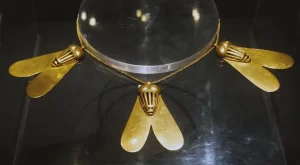 "Wisdom is a flower from which the bee its honey makes and the spider poison, each according to its own nature." [Chapter 2, 'Alchemists Handbook' by F. Albertus]. Link to the word ''chakra'' and/or ''karma''.
"Wisdom is a flower from which the bee its honey makes and the spider poison, each according to its own nature." [Chapter 2, 'Alchemists Handbook' by F. Albertus]. Link to the word ''chakra'' and/or ''karma''.
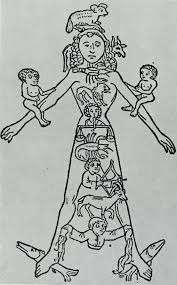
Ysbaddaden? 'Y'? Shears to enlarge.
"Jan Baptiste Van Helmont, the Flemish Alchemist, was important in the secret societies for reintroducing into Western esotericism ideas of reincarnation...which he called, ''the revolution of human souls.'' [Page 332, 'The Secret History of the World'].
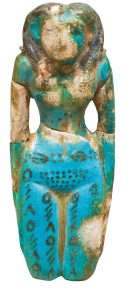
Truncated at the 'knees'.
From a different point of view: "The narrative relates how Ra, the solar principle, advances in age and loses his vitality. After being bitten by a poisoned serpent, he summons the Neteru {in this case - Isis - represented with the 'thet' symbol, i.e.,''buckle'' or ''girdle'' } - to aid him in removing the poison that ''rattles his bones''....AND/OR..."Horus first comes on the scene as the 'Elder' hawk. He is sometimes depicted as a member of the Heliopolitan Ennead in latent form, as a seed...Horus the 'elder' exists as a potential principle - Horus the 'younger' as an antidote to physical existence, with all its inherent dualities and conflicts." ['Page 97/100 of the book by R. Clark]. Try ''bones'' / ''girdle'' .
Poison in relation to antidote as a means...?
Question. Any ''poison'' within those zodiac signs?
Side note {something to ponder on}: Recall Cleopatra's {mythic?} end - of being bitten by a snake. Can anything be learned from it? Try ''Aker'' - to begin with.
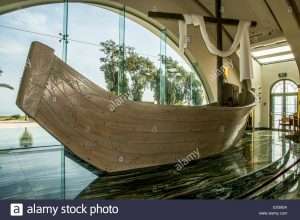
''M'' and/or ''octave''?
From a different perspective: ''Mary Magdalene, like the rest of humanity had to fight a life-long spiritual battle. St Paul testifies to this battle: 'our struggle is not against flesh and blood, but against pricipalities and 'powers', {archetypes?} - against the rulers of the world of this darkness, against the spirits of wickedness in the high places' {'angels'#?}....It is likely then that Mary suffers from these disorders {'seven'?} and that Jesus heals her....There is mention { Luke 13:11} of a woman who is crippled by a spirit for eighteen years .....'' [Pages 60/2 'Mary Magdalene' / J. Ristine].
Spirit = 'eighteen' ?
Soul = 'nineteen' ?
All as a means....?
Side note: ''Another holy site of the Beta Israel community is Gwang Ras. The site is home to springs on the fertile plains outside Gondar that are the source of the Gwang River, which snakes through Ethiopia and Sudan into the Nile. Beta Israel tradition holds that the original melokse, Abba Sabra, stopped at Gwang Ras while fleeing from the fifteen{th} century Solomonic king Zar'a Ya'eqob. The site subsequently became a place of pilgrimage, where 'miracles' are believed to have occured. Researchers found that the soil at Gwang Ras has a variety of bright colours, including red. A Beta Israel story tells of meloksewoch applying red mud to the head {forehead?} of a woman who came there after losing 'seven' children to illness. She later bore seven children, all of whom were healthy.'' [Page 61 'Archaeology' / Jan-Feb 2023].
Upstream or Downstream?
And/or: ''But on the fourth Way knowledge is still more exact and perfect.....It must be noted that in addition to the legitimate ways, there are also artificial ways which give temporary results only....It also happens that the door to the fourth room is opened artificially with a skeleton key. And in both these cases the room may prove to be empty.'' [Pages 1069/1076 {Kindle} 'In Search of the Miraculous' / P.D. Ouspensky].
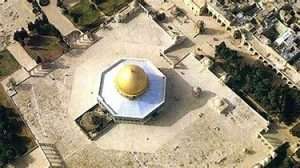
Squaring the circle represented with a 'flower bud'?
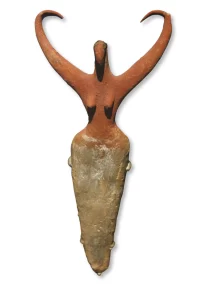
'Raised arms'? Foundation peg? Spirit or Soul? 'Broad' to enlarge. 'Joined' femurs? 'Y'?
Something hinted at {from the 'ritual' perspective}: ''The element AIR brings with it an octagonal figure spinning around in the air. It is a sacred geometrical device....We will now rebuild your skeleton {Saturn?}. In this meditation you will direct your minds eye to the vast, unique landscape of the White Desert of Libya....Multiple dried up ancient sea beds...one on top of the other....a profound feeling of silence....new bones created, sculptured by the winds.'' [Page 133-6 'Sekhmet: Transformation in the belly of the Goddess'].
All BEFORE Kom Ombo and Elephant Island.
West in relation to East as a means....?
Recall what eight represents.
Side note: ''The crocodile has a five-thousand- year-old reputation for being nasty and 'evil' - possessing all those traits we fear in ourselves: greed, gluttony,fury, malice, cold-bloodedness, violence and enmity. Even ancient Egyptians feared them, yet paradoxically adorned them with jewelry, maintained them as pets in the sacred lakes and fed them offerings fit for a god....honeyed cakes, milk, wine and meat to be devoured, broken down, digested and transformed into the energy that epitomized what we call ''crocodile''. When they 'died' the 'crocodiles' were mummified with elaborate ritual.'' [Page 114/5 'Dreams of Isis: A Womans Spiritual Sojourn'].
''Cakes'' to enlarge.
'Untouched by fire'?

Egyptian equivalent?
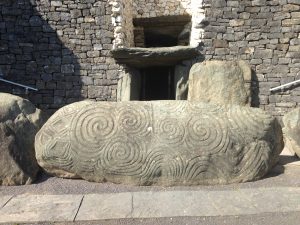
'Rectangle' at Newgrange/Ireland - where the sun {'power of the 'father''?} shines its 'light' at the winter solstice to the back of a PURPOSELY made INCLINED structure {love of the 'son'} - AND from henceforth gathers strength. As a means...?
Continued: ''AIR'' in relation to: ''If light, air and food are withheld from the human body, it will die; if cosmic thinking {i.e., in relation to that ''divine bit''}, feeling and willing are withheld from the human SOUL, it withers like a snapped twig {Tree of Life?}. Just as the nervous system needs light, the rhythmic {'OCTAVE'?} system needs air, and the digestive system needs food, likewise thinking, feeling, willing need the 'Light' of the Holy Spirit, the 'Love' of the Son and the 'Power' of the Father.....The triangle of Father/Son/Holy Spirit in the RECTANGLE of E/W/N/S is a spiritual figure that can lead to important developments in spiritual knowledge.'' ['Christ and Sophia' / V. Tomberg].
Aries or Aquarius? AND/OR ''three and four''?
REFRESHER: ''Error runs down a plain while truth has to labouriously climb its way uphill''.
'See' it?
West Kennet Long Barrow? And/or its ''open entrance'' was later 'closed'. Try Ramesses.
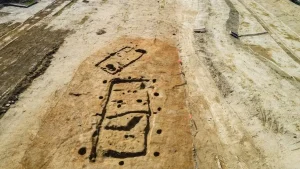
Enlarged elsewhere.
And/or: The discovery of a Neolithic era settlement is helping shed new light on how people lived on the shores of Lough Foyle some 5,000 years ago.
Archaeologists uncovered evidence of two large rectangular houses dating back to around 3,800BC during a 2021 dig at Clooney Road, Londonderry.
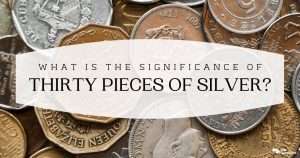
''The phrase "30 pieces of silver" is used more generally to describe a price at which people sell out.'' Silver coins from Tyre.
Side note: ''The women continued to ''accompany Jesus'' during the early church period....The Acts of the Apostles gives the account of the early Church's gathering in the Upper Room {'rectangular'?}....Luke reports: 'In those days Peter stood up among the believers to announce that it was necessary to choose another to replace Judas. He addressed the group of one {120} hundred and twenty believers {i.e., 15x8}, {Acts 1:15-16}.....We can imagine Mary Magdalene there in the fervor of the moment {'holy spirit'?}'' [ 'Mary Macdalene' / J. Ristine].
'Followers of Horus'?
Side step: ''The wealth of Tartessos was legendary, and flowed from its metal resources....Tartessos was ruled by a famous king, called Arganthonios, whose name seems to come from the Celtic word for silver, and who was said to have enjoyed an impressive long life....Who ruled for 'eighty' years and lived for 120 years. Later writers, including Pliny the Elder, would extend this to an even more impressive '150' years....It is also associated with the legend of Hercules - and, in fact, this is why we still refer to the Strait of Gilbraltar as the Pillars of Hercules....Described by Arrian as an ancient Phoenician town, containing a temple dedicated to Hercules {of Tyre}. And Tartessos also became part of the myth of Hercules - who travelled across Europe to capture the cattle of the monster {'giant'} Geryon, described by some as king of the Tartessians.'' [Page 238 'The Celts' / A. Roberts].
Question. What about the opposite 'pillar'?
''Tyre (/ˈtaɪər/; Arabic: صُور, romanized: Ṣūr; Phoenician: 𐤑𐤓, romanized: Ṣūr, Greek: Τύρος, translit. Týros) is a city in Lebanon, one of the oldest continually inhabited cities in the world,[1] though in medieval times for some centuries by just a tiny population. It was one of the earliest Phoenician metropolises and the legendary birthplace of Europa, her brothers Cadmus and Phoenix, as well as Carthage's founder Dido (Elissa). The city has many ancient sites, including the Tyre Hippodrome, and was added as a whole to UNESCO's list of World Heritage Sites in 1984.[2] The historian Ernest Renan noted that "One can call Tyre a city of ruins, built out of ruins...Throughout history from prehistoric times onwards, all settlements in the Tyre area profited from the abundance of fresh water supplies, especially from the nearby springs of Rashidieh and Ras Al Ain in the South. In addition there are the springs of Al Bagbog and Ain Ebreen in the North as well as the Litani River, also known as Alqasymieh.''
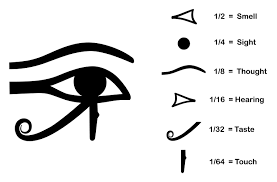
The ''stotting'' method?
And/or: ''The identification of Seth - or Typhon - with the desiccating principle is confirmed by the attribution to him of desert lands and all desert animals: antelope, gazelle, etc. These are ritually 'sacrificed' in the search for the 'Eye of Horus', ritual object of the cult inscribed on all temple walls. Finally, the association of an Ethiopian Queen with Typhon can find a geographic interpretation in the fact that the southern lands, attributed to Seth since remote antiquity, comprised not only the twentytwo nomes of Upper Egypt, but also a large section of Nubia and all the deserts of Libya: scorched deserts and fiery south.'' [Page 92 'Sacred Science' / R. A. Schwaller de Lubicz].
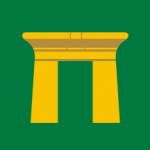
Qena = 'New City'. Coincidence or a ? Recall its position in the 'greater' scheme of things. Great Year?
Something 'unknown' becoming 'known' . Ra in relation to Horus. Middle ground = Osiris. Physical world in relation to the Duat. No more so represented {middle way?} within landscape symbolism as the Qena Governorate.
Try YHW{H}.
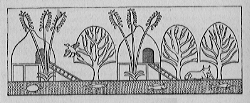
Coming or going?
And/or: Many have heard of a people referred to as the ‘Shasu’, since they are sometimes identified with the Israelites of the ‘Egyptian Captivity’ or their later descendants in Canaan. The term (meaning ‘to wander’ in ancient Egyptian) has come to be understood as referring to nomads or Bedouin from the area of Syria–Palestine. However, what the ancient Egyptians themselves meant by ‘Shasu’ is hotly debated. The term read as ‘Shasu’ in English is rendered from hieroglyphs, using the standard transliteration, as š3sw (=Sh+a+s+u).
The ‘land of the Shasu’ would be the general area where these tribes of nomads wandered. Overall, the interpretation of the names is made more difficult by the lack of a determinative (a sign in the hieroglyphs to designate to what the names refer, such as a people or country). However, it is still plausible that the name Y-h-w may be derived from a divine name, since it was common practice in the ancient world to refer to peoples or places as belonging to deities....
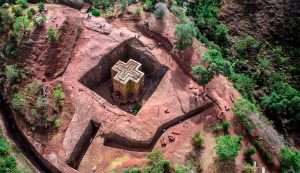
The Church of Saint George was carved downwards from a type of volcanic tuff. This is the sole architectural material that was used in the structure. It has been dated to the late 12th or early 13th century AD, and thought to have been constructed during the reign of King Gebre Mesqel Lalibela, of the late Zagwe dynasty.
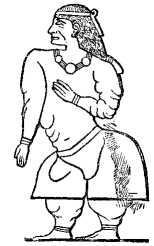
Land of punt.
However, the term ‘Shasu’ may have also been used by ancient Egyptians of the Eighteenth Dynasty to refer to an even wider range of peoples, including those of the far south. There is a contested reference to the Shasu in texts from the Nubian forts of Semna and Kumma, where possibly both the god Khnum and the pharaoh Amenhotep II are referred to as the ‘smiter of the šs3w’. However, this interpretation requires the assumption that the hieroglyphs rendered as šs3w may be considered phonetically equivalent to š3sw. Hence, it has been suggested that, instead, this particular epithet actually means ‘smiter of antelope’, since this occurs more commonly elsewhere in Nubia associated with Khnum.
Exercise: Recalling that the 'Scorpion' {because of those universal correspondences} can be associated with the 'snake' and 'eagle' {enlarged elsewhere} - can that therefore get one closer to understanding such works as Homer's secret Iliad? AND THEREFORE the subject as a whole?
"Sagittarius is the ninth astrological sign, which is associated with the constellation Sagittarius and spans 240–270th degrees of the zodiac. Under the tropical zodiac, the sun transits this sign between approximately November 23 and December 21. Greek mythology associates Sagittarius with the centaur Chiron, who mentored Achilles, a Greek hero of the Trojan War, in archery." [Wiki].
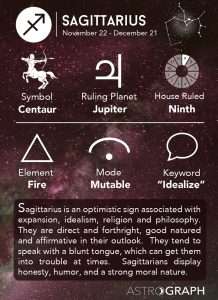
As Saint Nilus of Sora once did, I must ask pardon of my reader if anything appears in this work that is “inconsistent with the sense of truth.” To me, this means that if you do not recognize something from my description, | would ask you to classify it as untested, until experience makes its accuracy—or inaccuracy—clear to you. But this is a good point to introduce an ancient practice sometimes described in odd corners of the tradition, known today as pondering. To understand this book, certain parts of it—and there may be many of them—need to be pondered. Today we are so used to speed-reading and other methods of reading superficially, that we need to know a technique that most people perhaps once knew: what it means to ponder a statement. Page 17 To ponder a passage of a book we should first read it with great care, making sure that we have clearly dealt with each of its statements separately. Then we should ponder each statement on its own, comparing it with our own experience, until we recognize what it describes. When we have recognized what is described in each statement, we may reconsider the passage as a whole. At this point a characteristic sign is that it will seem less interesting. After all, it is not “news,” it is telling only things we already know. This sensation is a sign of success in our pondering. {same}.
"Sagittarius, half human and half horse, is the centaur of mythology, the learned healer whose higher {'Upper'?} intelligence forms a bridge between Earth and Heaven. Also known as the Archer, Sagittarius is represented by the symbol of a bow and arrow." Same.
'Saturn, Chiron and the Centaurs: To the Edge and Beyond' / M. Reinhart.
'Chosen'?
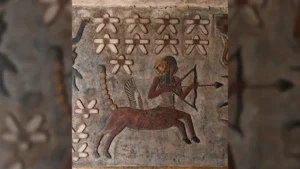
This zodiac sign depicts Sagittarius. While the zodiac signs at Esna were known before cleaning was done, the work allows them to be seen more clearly. Here we see a centaur with a scorpion's tail aiming a bow and arrow. Here we see a scorpion with claws at the front, eight legs {?} and a sharp stinger at the end of its tail.
AND/OR: A commentator in the 1993 issue of Bible Review claims that to follow the historical interpretation conscientiously it is necessary to disbelieve in basic tenets of Christianity, such as the Resurrection. One can only say of such people that they may believe something, but they have no Christian faith, for Christian faith is not blind belief in all and everything, but only in what Boris Mouravieff would call the objects of faith, objects outlined if not exhaustively defined in the Creed and, for inner Christianity, particularly in the Nicene Creed. “If you do not believe,” nor will you understand the writings of men of faith: this kind of modern interpretation ignores the intentions of the authors of works such as the books of the Bible, assuming that you can interpret a passage in the same way whatever the intentions of those who originally wrote it.

'Parts' of the zodiac.
It sometimes even assumes that you can interpret it idiosyncratically, from your own personal point of view, and still consider that you are passing on to others a valid view of the text that you are interpreting. Such an approach is only credible to those who are completely ignorant of the process of writing in a conscientious way, or who imagine that earlier authors were such fools that the content even of the great books of the Bible is accidental, and that no specific purpose existed for them other than the today fashionable objective of “self-expression.” Those with experience of intentional writing, writing for a specific aim, will realize that in such work the aim determines the method of expression, and that only an awareness of that original aim can accurately reveal the intended meanings of certain words whose interpretation is determined by their context. {'Page 15 'A Different Christianity' / R. Amis}.
Exercise {i.e., something to ponder on}: "All planetary glyphs are composed of a few primary symbols: the circle, which is said to represent the wholeness of Spirit, the half circle which is the receptivity of the Soul, and the cross which represents Matter..." ['Saturn, Chiron and the Centaurs'].
"The unassuming stone cross at Hendaye can still be seen today...Located in S/W France near the Pyrenees and the Atlantic ocean, Hendaye neighbours {boundary?} Basque regions to the south, where pilgrimages to Santiago de Compostela {N/W} along the symbolic Milky Way of Spain still take place. Because of its unique location, Hendaye occupies the center of a quadriparite landscape that is three parts earth and one part water." [From the book by J. Jenkins]. 'Transcendent' third?
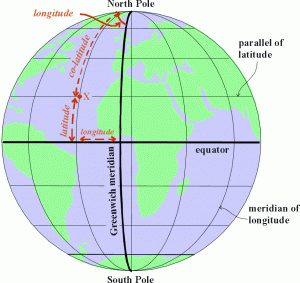
Where is the meridian of Earth? The line in Greenwich represents the historic Prime Meridian of the World - Longitude 0º. Every place on Earth was measured in terms of its distance east or west from this line. The line itself divided the eastern and western hemispheres of the Earth - just as the Equator divides the northern and southern hemispheres.
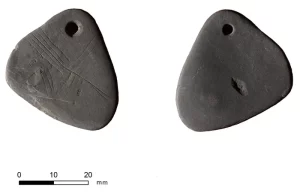
Found at Star Carr: Straight lines and curves? 'Meridian of the Sun'? ''Gap'' to enlarge.
Side note: "The Cross constellation is the German Kreuz, the Italian Croce, the French Croix. With us it is the Southern Cross. It was unknown to the ancients by its present title - its four chief stars being noted by Ptolemy as a part of the Centaur - which now surrounds it on three sides. As such Bayer outlined it over the hind feet....Pliny may have known it as Thronos Caesaris in honour of Emperor Augustus yet it was then invisible from Italy, though plainly visible from Alexandria....In India it was called the Beam {yoke?} of Crucifixion....Its a recent invention, probably 16th century....The Crux lies in the Milky Way....The two great stars, which mark the summit and foot of the Cross, having nearly the same right ascension, it follows then that the constellation is almost perpendicular at the moment when it passes the meridian. This circumstance is known to the people of every nation situated beyond the Tropics or in the southern hemisphere. It has been observed in what hour of the night, in different seasons, the Cross is erect or inclined....Von Humboldt thought it remarkable that these so striking and well defined stars should not have been earlier separated from the large ancient constellation of the Centaur, especially since Kazwini and other Muhammadan astronomers took pains to discover crosses elsewhere in the sky; and he said that the ancient Persians , who knew the Cross well, celebrated a feast by its name, their descendants, to whom it was lost by precession, finding its successor in the Dolphin." [Page 184-190 'Star Names and T
